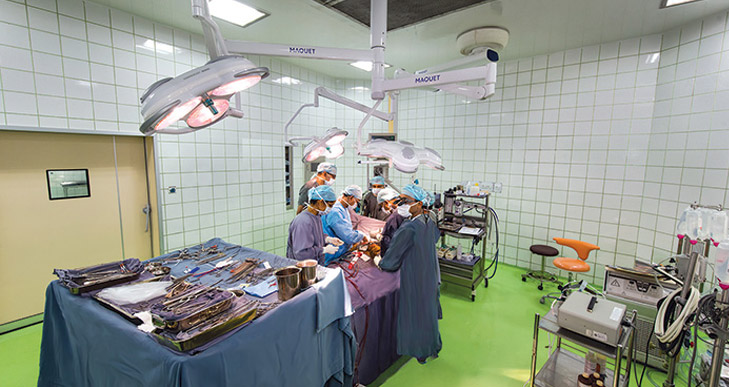Treatments & Procedures
Aortic Aneurysm Surgery
An aneurysm is a bulge or swelling in the artery, which, if it ruptures, would lead to internal bleeding that could be fatal. The MIOT Centre for Thoracic and Cardiovascular Care (CTCC) is a leading centre for treatment of this most challenging area in cardiology, with over 500 aneurysms surgeries and a 98% success rate.
Decoding aortic aneurysms
There are three types of aortic aneurysms, classified according to their location on the aorta. An aortic root aneurysm forms on the aortic sinus, and is comparatively rare. Thoracic aortic aneurysms are found within the chest. Abdominal aortic aneurysms are the most common form of aortic aneurysm and form on the segment of aorta within the aortic cavity. Aneurysms usually do not cause symptoms until they get quite large. However, when they are large enough to cause symptoms, they commonly present as chest or back pain, palpitations, fatigue, dizziness or shortness of breath.
The goal of aortic aneurysm surgery is to intervene and remove the dilated portion of the aneurysm before it can rupture or tear.

Endovascular stenting for aneurysms – a new technique without open surgery
The specialists at MTCC normally treat aortic aneurysms through keyhole surgery, where a graft is introduced through a tiny incision in the thigh into the area of the aneurysm. This intricate procedure, which requires specialised skills, takes about an hour. The patient can go home in three days.
Hybrid procedures for complex aortic aneurysms
This combined procedure, done at MIOT with great success, involves the cardiovascular surgeon, radiologist and cardiologists. It is performed in the Cath lab-cum-theatre suite with high-tech imaging facilities.




